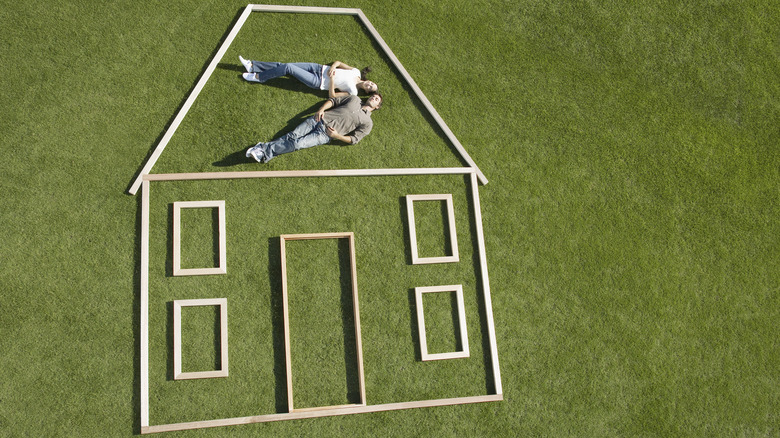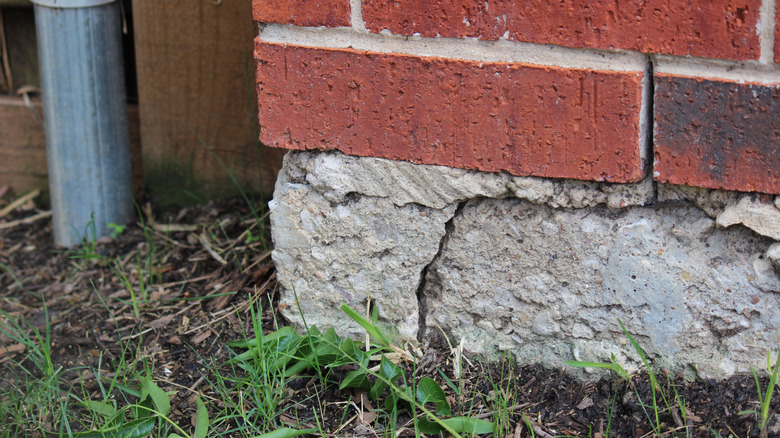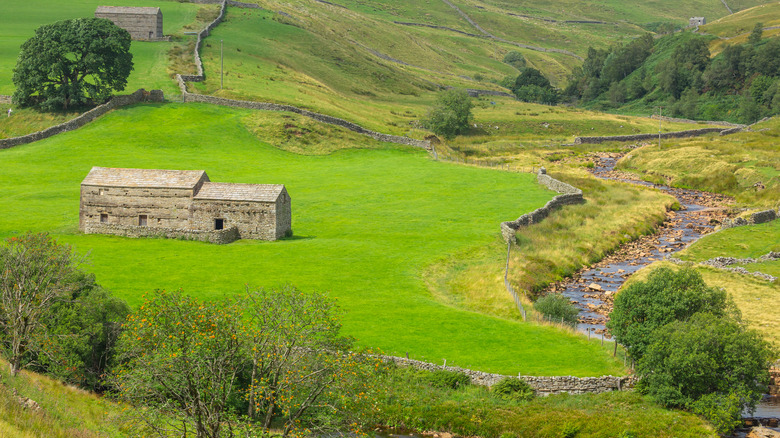What Is Grade Sloping Towards The Home, And How Can You Fix It?
Grading is often seen on roadways, and many drivers who traverse the highway on a regular basis are likely familiar with this concept already. The U.S. Department of Transportation notes that cross slope (spanning the lanes horizontally along a driver's path down the road) is typically between just 1.5% and 2%, with a slight bump in grade steepness in particularly rainy areas or those prone to standing water and flooding. For the roadway's length in a vehicle's direction of travel, grade most profoundly affects larger vehicles, especially heavy cargo trucks (via The U.S. Department of Transportation). Mitigation strategies to prevent grip loss and runaway vehicles that have lost control are necessary on steep slopes.
But grade is also a feature of home building. Unfortunately, Rigid Inspections notes that roughly one in 40 homes have proper grading on all four sides of the property. A home is typically built on a relatively flat piece of land, or on a plot that's been flattened to a certain degree. But builders then have the task of regrading the space to account for water runoff. Many fail to correctly include these security features. But a fix is possible.
Slope toward the home can have catastrophic impact on your foundation
Enviro Clean Abatement Services reports that standing water can severely impact the structural integrity of your home's foundation. If your property's slope directs water toward the house — rather than away from it — it can eventually pool around the structure itself, adding hydrostatic pressure that may seep directly into the pores of your concrete foundation. Over time, this can lead to cracks in the concrete, and even rotting of the timber framing that lies farther inside the exterior structure of the home. Standing water is a menace to homes in a variety of ways, but this problem is likely the least obvious of all the water issues that homeowners may encounter.
Similarly, a grade that is flat can produce equal volumes of damage to your home over the long term. A proper landscape grade is one that brings water away from the home, and anything that doesn't accomplish this task — a flat grade included — invites the risk of pooling water coming into contact with the house. Solving this threat is a must for any homeowner who doesn't enjoy proper grading already. And with the prevalence of imprecise slope grading in residential construction, it's worth checking into the slope of your landscape, even if you haven't experienced any water-related issues on the property before.
Fixing improper grading can be done in a few ways
Proper grading is essential to securing the longevity and health of your home, so it might seem like a daunting task to fix a grade slope that isn't oriented away from your foundation. However, correcting a slope's direction isn't actually all that difficult. Rigid Inspections notes that a healthy grade is one that drops 6 inches over the course of 10 feet running out from your home — or a 5% grade. Similarly, Rigid Inspections suggests that this amount of slope is readily visible to the eye. This means that if you squat down next to the exterior walls of your home, you'll be able to identify whether or not your lawn is properly graded.
On large lands, regrading the slope of the landscape is a somewhat time-consuming but relatively simple task. For homes in suburban developments, a homeowner might have to instead rely on the introduction of a swale. A swale, according to Premier Pond, not only helps to prevent pooling water from coming into contact with your home, but can also add a design element to your lawn. Swales can be stylized with rocks, wildflower beds, or even ponds or other water features (making your landscaping perhaps resemble a medieval moat!).
Swales direct runoff water around the home in a sweeping path and grade downward from back to front, leaving any residual liquid to harmlessly rest in the street and sewer system of your community.


